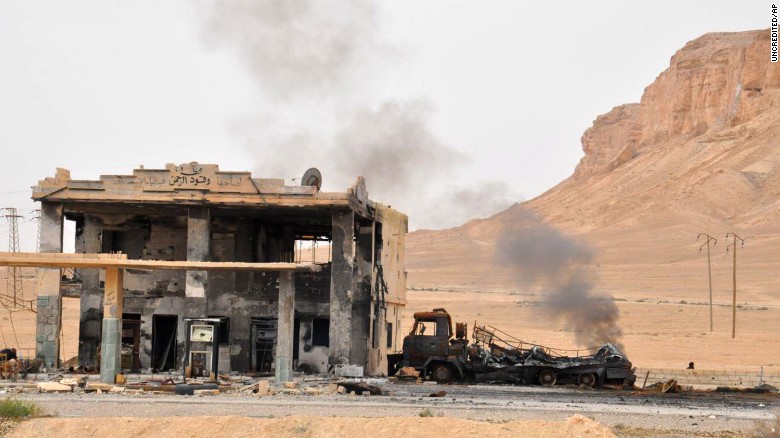
Syrian forces recaptured Palmyra from ISIS on Sunday, months after the city fell to the Islamic extremist group, state media reported.
The army, along with militias loyal to the government, seized the city and chased out ISIS fighters, al-Ikhbariya TV reported. The Russian air force was key in taking back Palmyra, according to Syria’s state-run SANA news agency, quoting army command.
“This victory helps in further tightening the noose around ISIS terrorists,” the army told the news agency.
ISIS militants seized control of Palmyra in May and immediately started demolishing ancient ruins considered among the world’s most treasured.
Palmyra Castle
Syria’s army marched toward the city, dismantling explosives left behind by the terror group.
By Sunday, the army had seized the entire city, state media reported.
Months of destruction
After it seized the city in May, it started destroying historical sites a month later, expanding its conquests and showing its contempt for the people and their history.
Syria said ISIS destroyed two Muslim holy sites: a 500-year-old shrine and a tomb where a descendant of the Prophet Mohammed’s cousin was reportedly buried.
Antiquities expert beheaded
UNESCO, the U.N. agency that documents the world’s most important cultural and natural sites, called the temple’s destruction a war crime.
Palmyra, in the Homs countryside northeast of Damascus, was a caravan oasis with various influences.
Its art and architecture are a mix of Greek, Roman and Persian influences, according to UNESCO.
Unapologetic
Irina Bokova of UNESCO said the world body plans to review the damage.
“For one year, Palmyra has been a symbol of the cultural cleansing plaguing the Middle East,” Bokova said.
“As soon as security conditions allow, UNESCO is ready to go to Palmyra with those responsible for Syrian antiquities on a mission to evaluate damage.”
Bokova said those responsible for the destruction will be punished.
ISIS claims it’s in control
It shows the city’s deserted streets and cuts to an ISIS militant sitting on a tank, saying the group will defeat any forces that enter the city. The video shows a panoramic shot of Palmyra’s ruined historical site.
CNN cannot independently verify the authenticity of the video.
As reported by CNN
